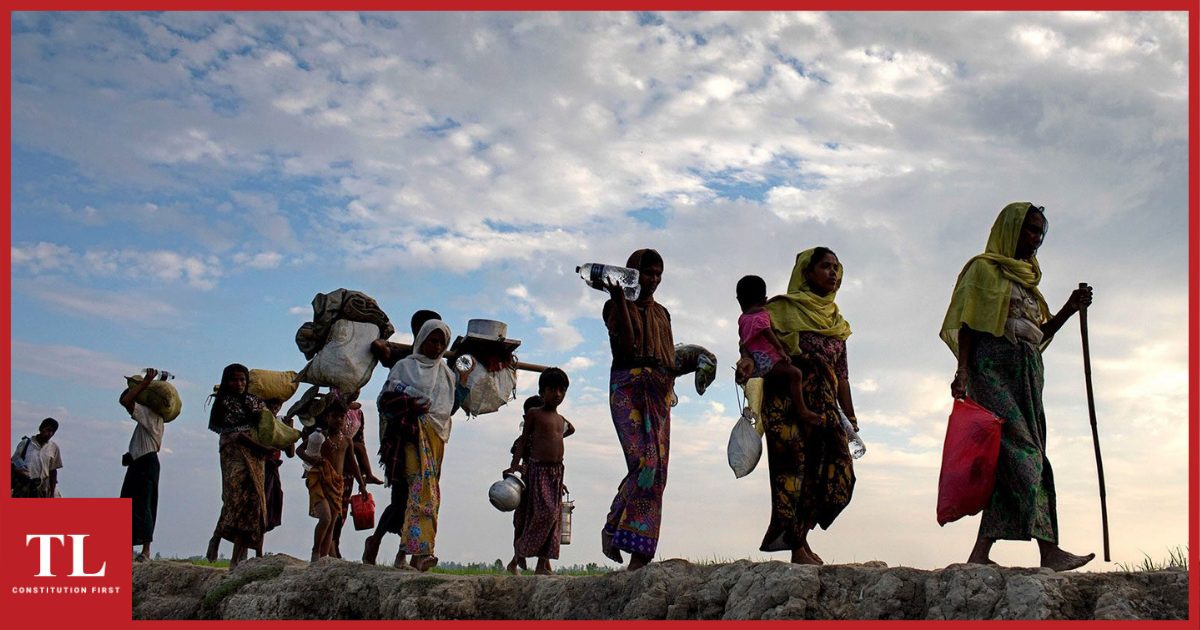The uncertain future of Rohingya children in ramshackle camps in India looms large as their education hangs in the balance, but they are fighting courageously against a world that simply does not care.
—
THE far-fetched dream of formal education of almost 150 Rohingya refugee children living in 9/9 feet shacks in camps at Madanpur Khadar, Kalinda Kunj, became a reality after years of struggle when they started attending school due to the efforts of their community leaders.
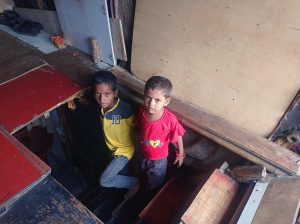

Children at the campsite
The education of these children used to be sponsored by a charity trust until the trust severed its agreement with the school. However, they were able to resume their learning journey in 2022 after women from the community decided to take steps to get the children enrolled in schools.
Minara, 30, the first woman community leader of the camp, reached out to the United Nations High Commissioner for Refugees (UNHCR) and worked with them to ensure that the children could resume their education.
India is not a signatory to the 1951 Convention relating to the Status of Refugees (Refugee Convention) and its 1967 Protocol. Hence, it is not obliged to grant asylum to those who seek asylum in the country based on the five grounds of persecution provided in the Refugee Convention.
However, India is a member of the UNHCR’s executive committee which has the mandate of providing assistance to asylum seekers.
“Despite being a widow, today, I have more passion and courage than a man could ever have. I am a woman, and that alone is my greatest strength,” says Minara.
Mother of four children but a caretaker of all 53 families living at the campsite, she adds, “It is my responsibility to think about the greater good of the community.”
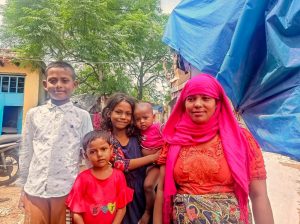

Community leader Minara with children at the camp
Until 2018, under the Zakat Foundation of India’s initiative, all the children at the camp used to go to a private school. However, just before the Covid pandemic, without prior notice, the children were debarred from attending school.
“With their future now at stake, they started to roam around aimlessly,” Minara explains.
Thus, together with other community leaders, she wrote multiple letters to the UNHCR, who made affidavits of the refugee children based on their refugee cards and got all 150 children admitted to various schools under the Delhi government.
“Since these schools ask for valid Aadhar cards, which the refugee children do not possess, it makes the process of admission difficult at times,” says Dilwer Hussain, legal officer at Social Legal Information Centre (SLIC), the official legal body of the UNHCR.
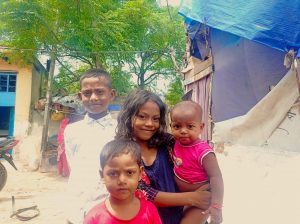

Children at the campsite
“Post-2018 and in the years after the lockdown, I could not continue my studies. I constantly had thoughts that I would never be able to resume my learning. It is only because of the initiative of our community leaders that I can now dream of becoming an English teacher,” says 16-year-old Sadia Akhtar, studying in ninth standard at government girls senior secondary school, JJ colony, Kalindi Kunj.
“We could not offer the best of life to our children, but now we are hopeful that they can offer the best to themselves,” added Sadia’s mother, Sufia Akhtar, mother of five children; all of whom manage to go to school today.
Sending children, especially girls, to school has further helped curb child marriage, particularly prevalent in the campsites.
“When I realised I was the only girl left in my class as the rest of them got married at the age of 13–14, I took the initiative of counselling the parents against child marriage and encouraged them to send their female children to school. Many community members protested against me, but I continued with my efforts, and as a result, the number of child marriages in our community has dropped significantly,” says Mizan, 20, a self-elected community leader who gave up on her dream of becoming a doctor and chose to be a social worker instead so that her efforts could pave the path for several other future doctors from the community.
However, commenting on the performance of the Rohingya refugee children admitted to school, Seema Bhatia, social studies teacher, at government girls’ senior secondary school, Khadar, says, “Their academic performance has been consistently poor, with a failure to pass any test.”
Bhatia attributes the students’ academic challenges to several factors. Long-term absenteeism, exceeding three months on occasions, remains a significant issue. Despite continuous efforts to motivate them, there seems to be a lack of willingness to engage in studies.
Adding to the complexity, the students’ affiliation with the UNHCR poses a challenge for the school. Despite their academic struggles, the school is compelled to promote them every academic year due to this association.
Savita Sharma, their Hindi and class teacher, underscores the heavy language barrier as another contributing factor to their academic difficulties.
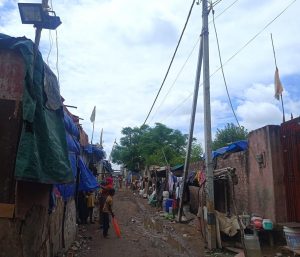

Madanpur Khadar campsite
In 2016–17, targeted by the military and political establishment of the country with genocidal intent, most ethnic Rohingyas (over one million) fled from their native Rakhine province of Myanmar into Bangladesh, India and other countries.
One of the world’s most persecuted minorities, victims of the world’s fastest-growing humanitarian crises, as declared by the UN, continue to remain Stateless today.
Since India is not a signatory to any UN conventions on the protection of refugees and its domestic policies on the issue are ad hoc in nature, these Rohingya refugees, referred to as ‘illegal migrants’, continue to live a life in the camps with little dignity and an uncertain future.
While some camps manage to provide basic human rights like education, the larger picture continues to remain rather gloomy.
“I had to discontinue studies after the fifth standard. Each day, I am constantly reminded of how much I am missing out on my studies,” says Shaheen Akhtar, 12, a Rohingya refugee residing in Shram Vihar Campsite, the largest in the Delhi National Capital Region.
Girls aged 12 or 13 are forcefully married against their will, an illegal practice that continues at this campsite as well, adds Sitara Akhtar, 33, Shaheen’s mother, who aspires for a better future for her daughter.
“The best hope for a bright future for the Rohingya children is a return to their homeland on their own terms. However, until that happens, the lack of acceptance not just in India but also in other neighbouring countries in Asia is likely to remain a huge obstacle to their development,” says Geetanjali Krishna, an independent journalist, who has extensively recorded the lives of Rohingya migrants.

